DIY Tour of Fort Santiago in Intramuros – Fun educational activity for kids and parents
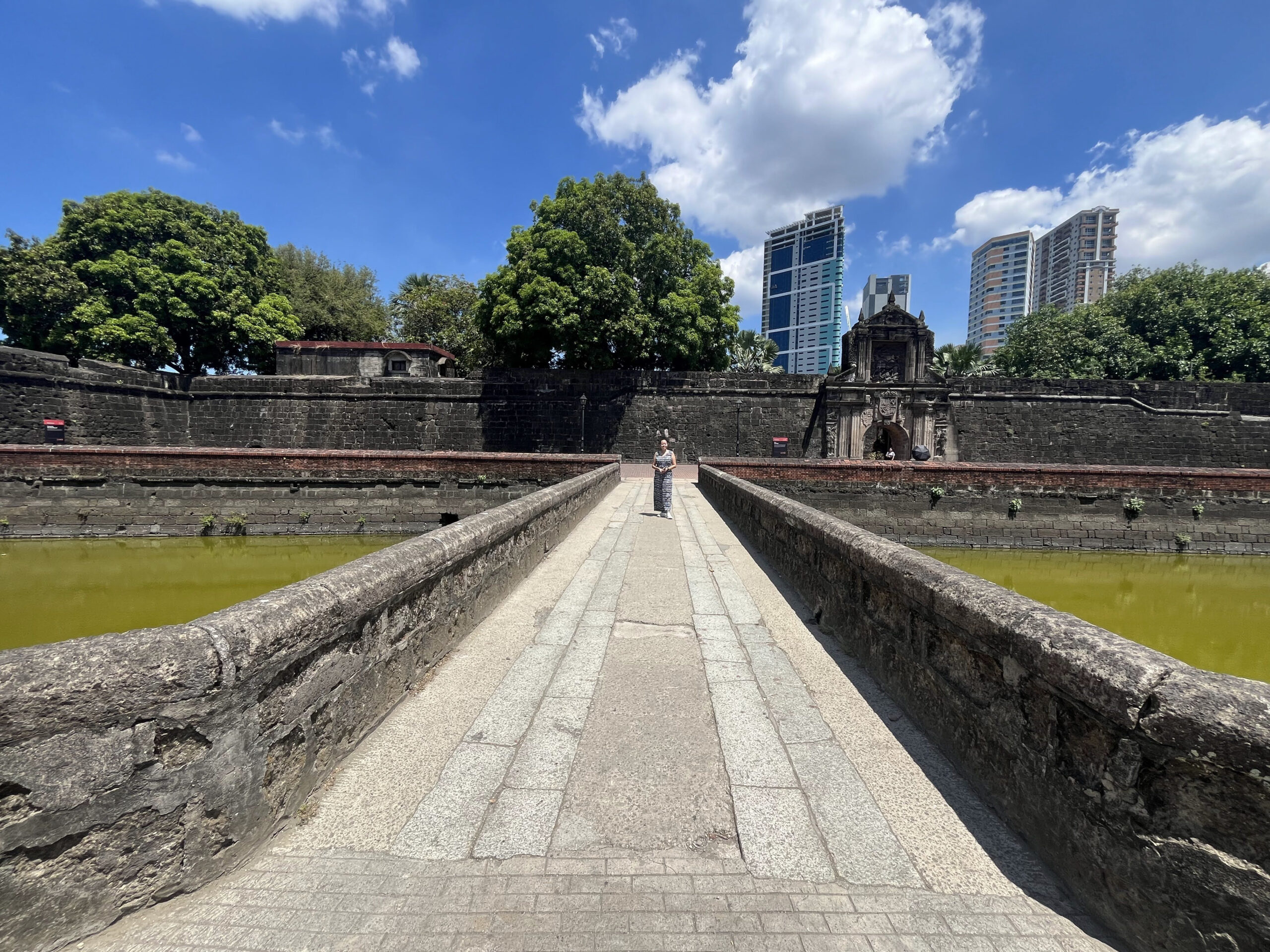
A DIY Tour Inside Fort Santiago Will Be Your Family’s Most Educational Adventure Yet
Greetings fellow parents! This is April from RelaxLangMom.com coming at you with a one-of-a-kind DIY tour inside one of the most historic sites in Manila – Fort Santiago. Strap on your walking shoes and get ready for an educational adventure you and the little ones aren’t gonna want to miss.
Planning Your Fort Santiago Expedition:
Geared Up and Ready to Go:
- Age is Just a Number: Fort Santiago is a great outing for children of all ages. For younger kids, focus on the more interactive aspects and the fort’s grand architecture. Older children will appreciate the historical significance and deeper stories.
- Lighten the Load: Opt for comfortable walking shoes for you and your little ones. The fort has a fair amount of walking, with some uneven terrain. Bring a stroller for younger children who might get tired.
- Hydration Heroes: The Philippine sun
can beIS scorching, so pack plenty of water and wear sun hats, especially for the little ones. - Snack Time Saviors: A few light snacks will keep your tiny explorers fueled.
- Capture the Memories: Don’t forget your camera! Fort Santiago offers endless photo opportunities, from the imposing walls to the charming courtyards.
Intramuros Intel:
- Getting There: Intramuros is easily accessible by car, taxi, or ride-sharing apps. There’s limited parking within Intramuros itself, so consider dropping off near a gate and walking in. If you do insist to bring a car, there is a designated parking area a hundread meters near the entrance with a basic parking fee of P100.
- Entrance Fees: Fort Santiago has minimal entrance fee of P75, making it a budget-friendly adventure. Discounted rates are available for children and the disabled..
- Opening Hours: The fort is open daily, so you can choose a time that works best for your family.
Fort Santiago: A Legacy of Conquest Built on Forgotten Ground
Now I know exploring old Spanish forts and learning about the history of colonial warfare isn’t exactly every kid’s idea of a fun weekend activity. But hear me out – I promise this tour will be so jam-packed with fun activities, cool photo ops, and fascinating facts that even the pickiest of learners will be on the edge of their seats.
Fort Santiago, a visually stunning landmark within Manila’s historic Intramuros, boasts an imposing gate – a symbol of its enduring presence. However, the true story of Fort Santiago lies beneath its surface, revealing a complex history of conquest and a forgotten kingdom.
What to Tell The Children
Originally, this very spot held a fortified settlement built by Rajah Sulayman, the last ruler of pre-colonial Manila. It is a built as a palisade -with bamboo and wooden fortifications typical of its era. Known then as Maynila (with a “y”), the city thrived as a vibrant Islamic trading hub. The Spanish arrival in 1571 marked a turning point. When the Spaniards first came in 1571, the then very young Rajah Sulayman chose to fight despite the recommendation of his uncle Rajah Matanda as well as Lakan Dula. When they were losing, he chose to burn the ground and reatreat to Bagumbayan. This was considered a defeat for the Spaniards and they went back to Cebu only to come back a few months later. This is when Lakan Dula, fearing for the loss of their domain, pointed the Spaniards to occupy the old Sulayman grounds. They chose to build Fort Santiago upon the ruins of burned Rajah Sulayman’s fort, a symbolic act of dominance over the conquered land.
The irony deepens with the fort’s namesake, Santiago Matamoros (St. James the Moor-slayer). This legendary figure is a Christian saint, depicted as a warrior who aided Christians against the Moors in a fictional battle. Naming a fort built on Muslim grounds after such a figure becomes a clear statement of Spanish power and a deliberate erasure of the pre-colonial past.
This wasn’t an isolated tactic. The Spanish deployed Santiago Matamoros as a symbol throughout their colonial endeavors, in Cuba, Mexico, etc.. St James served as a rival to indigenous deities and a supposed protector of the Spanish from the locals, often portrayed as a conquistador himself.
Understanding this historical context on your tour sheds light on the true meaning behind Fort Santiago’s name. It was a symbol of Spanish conquest and dominance over the indigenous population.
Beyond Domination: A Story of Resilience at Fort Santiago
Now, exploring Fort Santiago offers a chance to confront this complex past. While the fort itself may stand as a symbol of Spanish rule, it also holds stories of resilience. The fort served as a prison for numerous revolutionaries from 1570 till 300 years later. Our national hero Dr. Jose Rizal was imprisoned there. After the Japanese occupation, hundreds (600) of dead fighters were found dead on its dungeons.
But before I get off tangent with the history, let me share the the itinerary for the DIY Tour: This is the official map from the Intramuros Historical Commission. We chose to skirt it on the sides instead of going through the center.
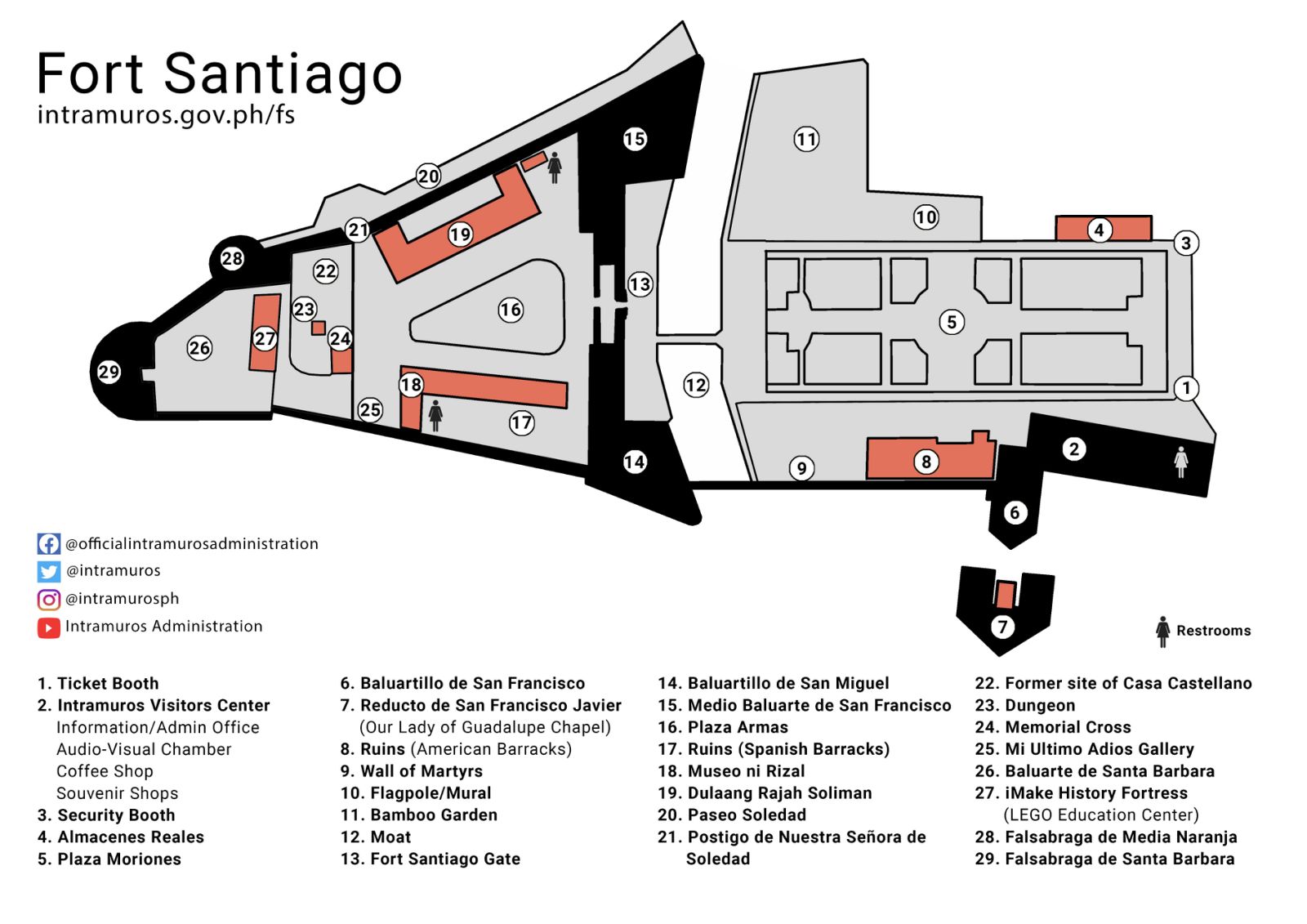
DIY Fort Santiago Tour Itinerary

Baluartillo de San Francisco Javier. The main entrance holds the ticket booth and an information center which is originally the Baluartillo de San Francisco Javier. This unassuming outpost, built in 1662, once played a vital role in protecting Intramuros’ seafront. However, fate intervened – a powerful earthquake in 1645 caused significant damage, including a section of the fortification itself and even the governor-general’s residence. The aftermath saw the remaining structure extended as a curtain wall, solidifying the city’s defenses.
Initially named after St. Francis Xavier, the patron saint of foreign missions, the baluartillo served a more mundane purpose by the 20th century, becoming a series of storage chambers. A dark twist came during World War II when the Japanese military police (Kempei Tai) repurposed these ten chambers as prison cells for Filipino and American soldiers. Today, the area has undergone a complete transformation, serving as the welcoming Intramuros Visitors Center, offering information, audiovisual exhibits, refreshment kiosks, and souvenir shops.
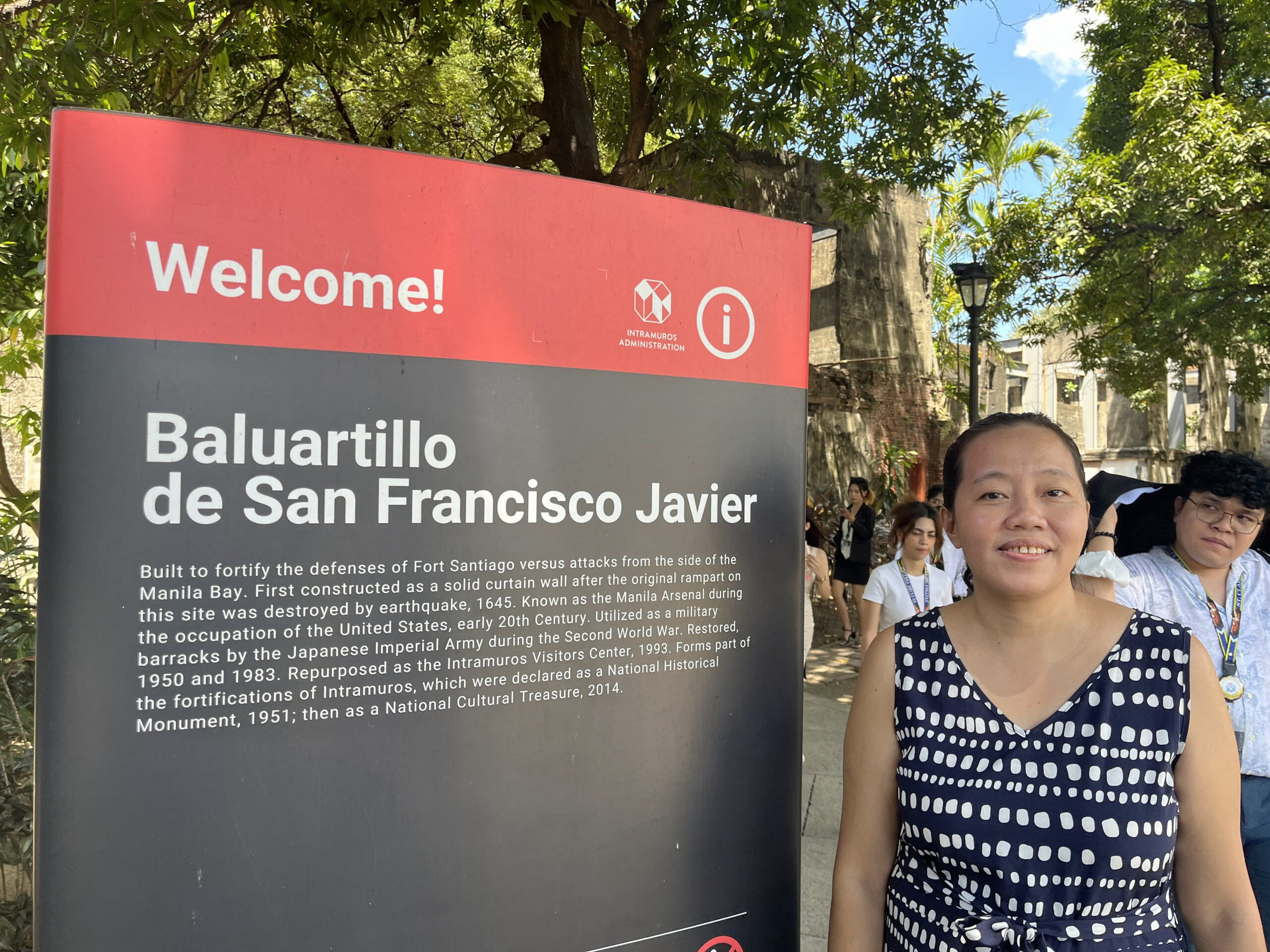
Ruins of the American Barracks. If you don’t have a guide, it would be easy to make the mistake of going directly through the fields and direct to the gate of Fort Santiago. We almost made this mistake too. The key is to skirt the Baluartillo till you end up on its side. Standing beside the imposing Baluartillo de San Francisco Javier are the haunting ruins of the American Barracks. This building, once a bustling military hub, is now in ruins. It was famous as a temporary prison for former Philippine President Elpidio Quirino during the harsh Japanese Occupation of 1943. In 2017, the ruins underwent careful restoration, transforming the space into an open-air exhibition area. We went through the back at the Baluartillo walls overlooking the ubiquitous Golf and Driving range of Intramuros.
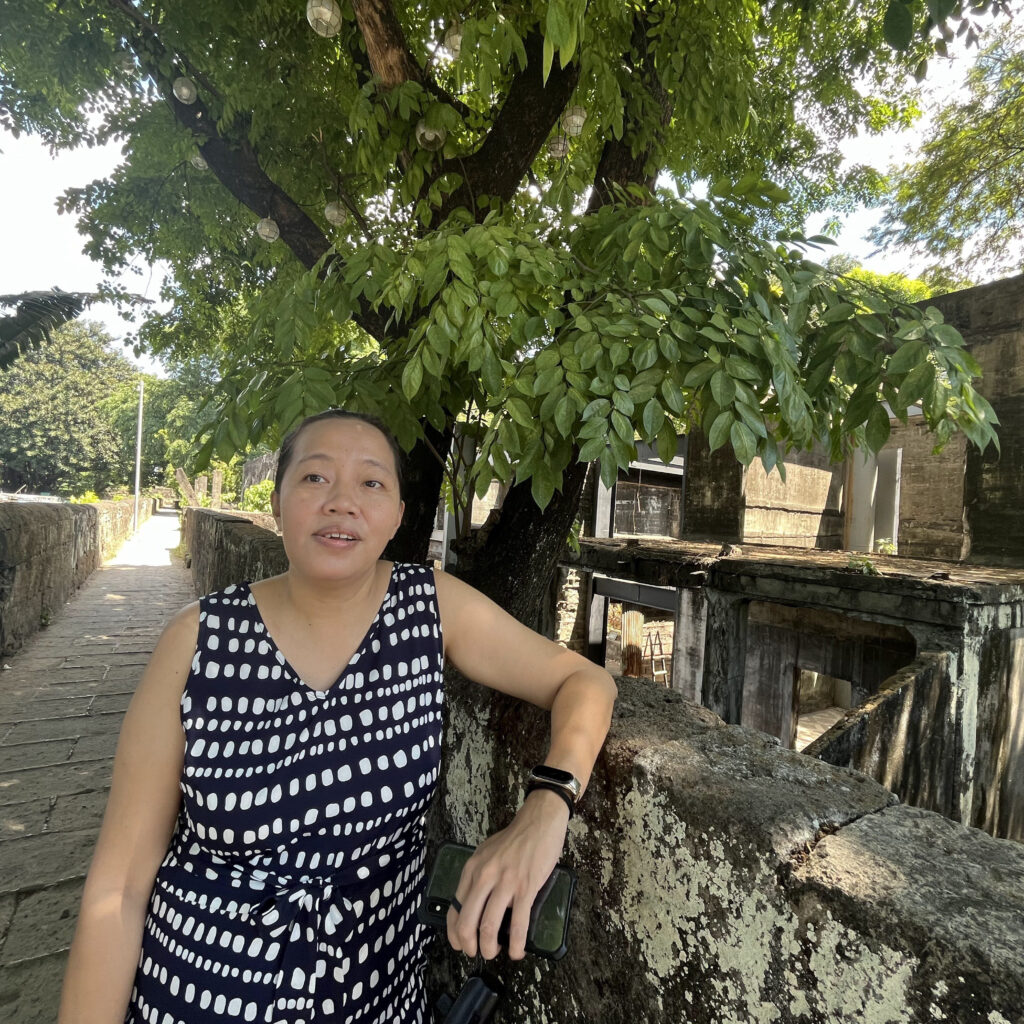
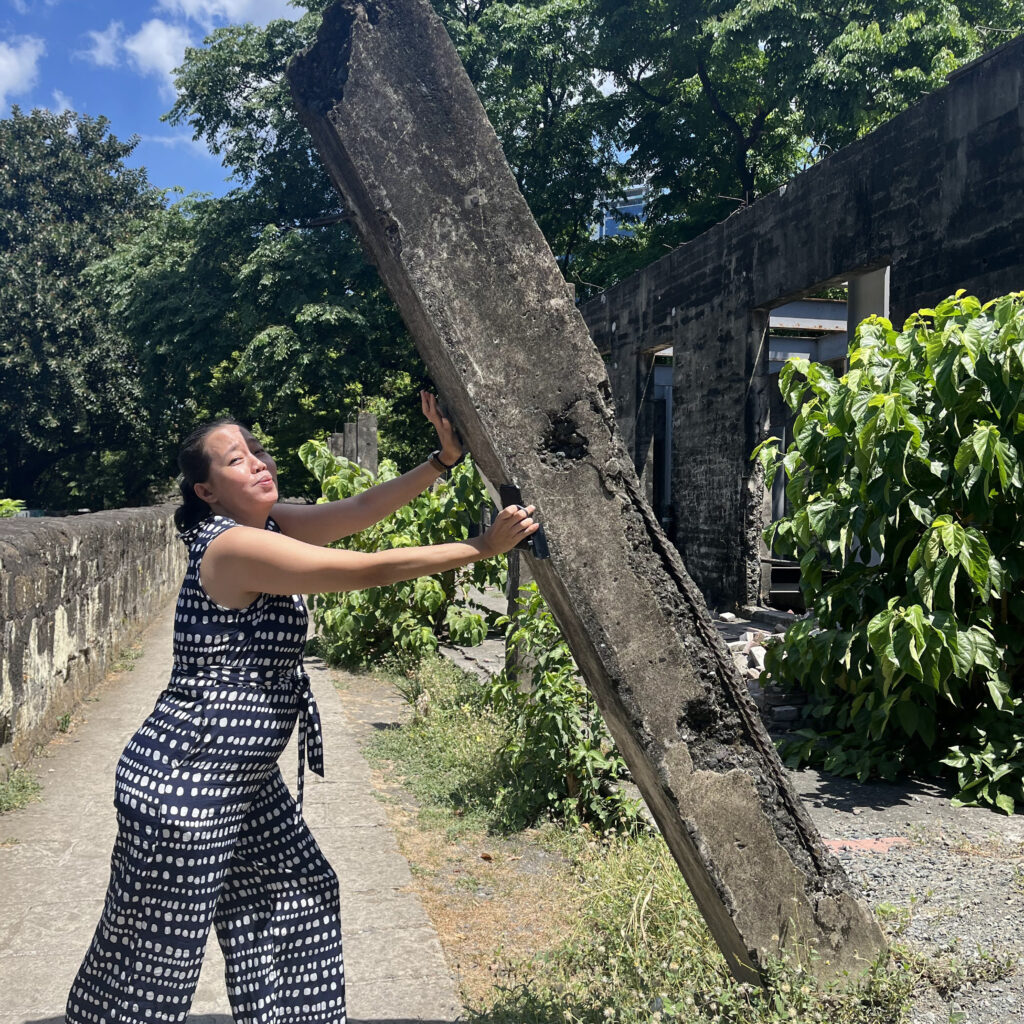
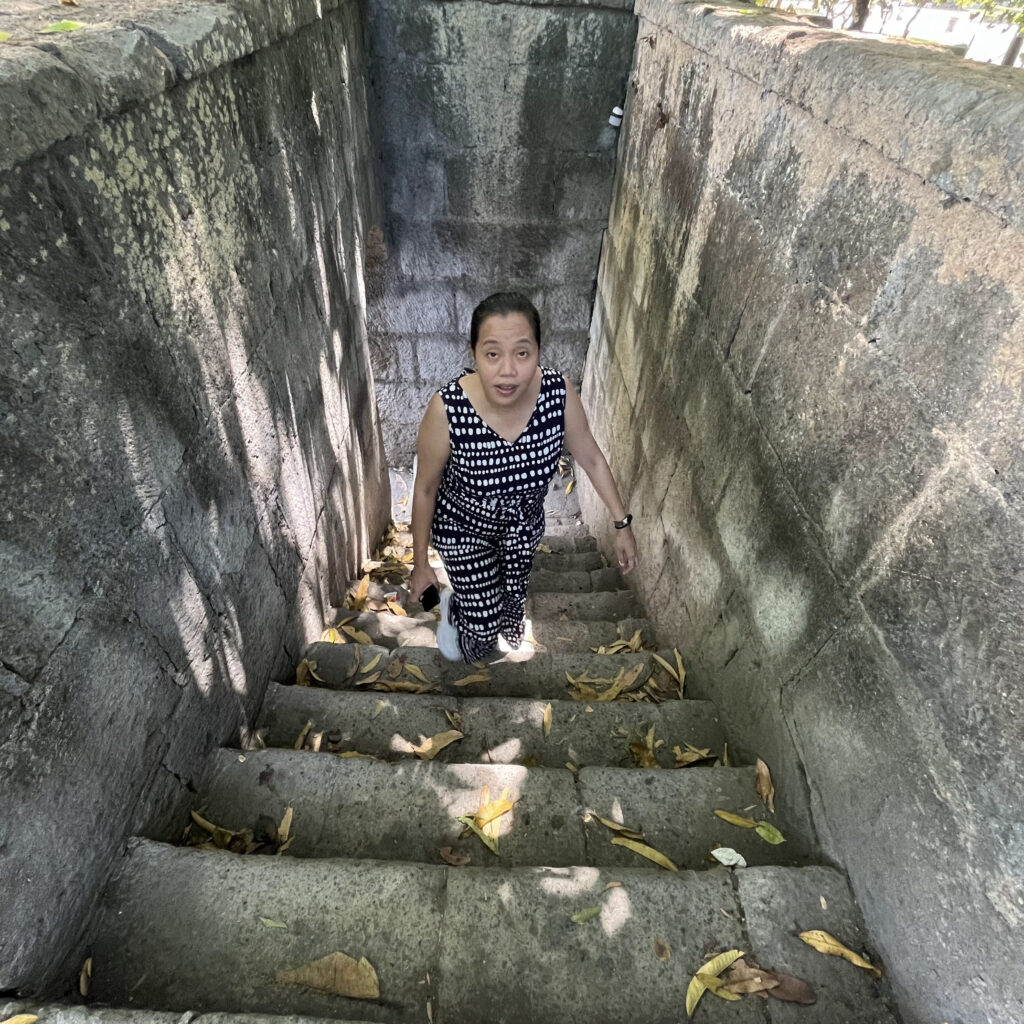
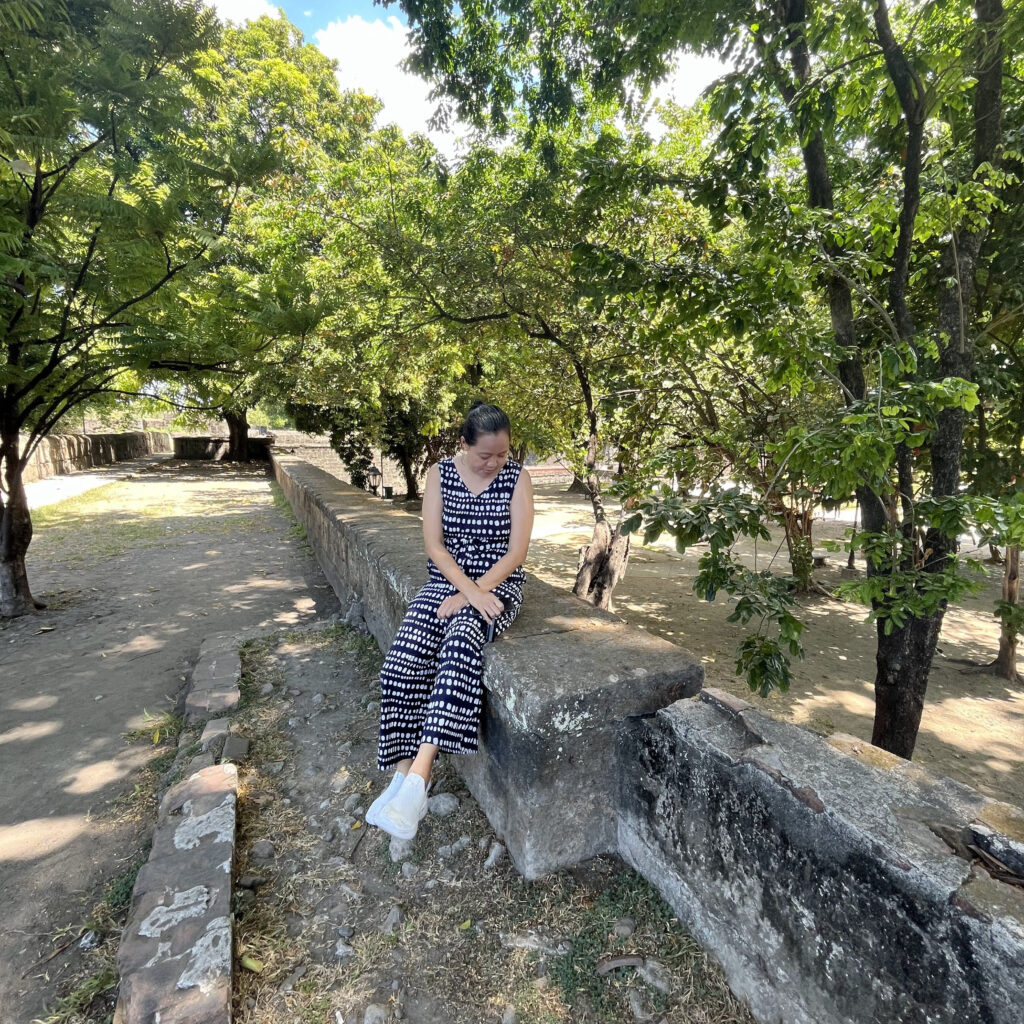
The Restored Moat. Going down the Baluartillo de San Francisco Javier, you can see the moat immediately. Since Fort Santiago was originally conceived as an impregnable island fortress, it is surrounded by a man-made moat that connected to the mighty Pasig River and Manila Bay. It was only breached once -when the British came to conquer the Philipinnes. (I didint really know this specific point in our history and most don’t know it because the British were defeated after 2 years).
However, following the conclusion of Spanish colonial rule in the early 20th century, the moat was filled in with earth to create what is now known as the golf course. Thankfully, the Intramuros Administration recognized the historical significance of this feature. In the 1980s at the behest of the then First lade Imelda Marcos, they embarked on a project to re-excavate and restore the original moat around Fort Santiago, breathing new life into this vital element of Fort Santiago’s story and contributing to the overall coolness factor conservation efforts of the historic site. I’m not sure if its only decorative now because I dont see any way for the water to go out because of a wall and the water, as you can see, is green.

Fort Santiago Gate. As you approach the fort’s main entrance, the Puerta Real, you are greeted by an intricate façade adorned with the image of St. James the Moor-slayer, the patron saint of Spain. This grandiose gate, built in 1663, serves as a prelude to the rich Spanish colonial heritage that runs through every corner of Fort Santiago. As I have mentioned earlier, full of irony and the use of full on power. Once inside, the Plaza de Armas unfolds before you, a vast open space that was once the heart of military activities during the Spanish era 2. Let the kids imagine the sound of marching soldiers and the clashing of swords as they wander through this historic plaza, now a tranquil oasis adorned with lush gardens and fountains.
The Rizal Shrine. At the right side upon entering the gate, and passing the beautiful Spanish Barracks Ruins, you’ll find yourself at the Rizal Shrine, a museum dedicated to the life and legacy of José Rizal . Here, you can check out the works and philosophies of Rizal, whose writings ignited the flames of revolution against Spanish colonial rule. Immerse yourself in the exhibits, which showcase Rizal’s personal belongings, manuscripts, and other artifacts that offer a glimpse into his remarkable life. Follow the bronze footsteps marking his final walk to the execution grounds. Outside, you can also see the Mi Ultimo Adios Gallery -his last poem, translated into several languages.
Baluarte de Santa Barbara. Beyond the Rizal Shrine, as proof of its military prowess, lies the Baluarte de Santa Barbara, a triangular bastion facing the bay. This was a formidable defensive structure that once guarded the city from invaders 5. Towering over Fort Santiago is its most prominent defensive structure, built in the 16th century. This formidable bulwark played a crucial role in safeguarding the entrance from the Pasig River. Later additions transformed it into a multi-functional space. Vaults were added for secure storage, a dedicated powder magazine ensured a ready supply of ammunition, and soldiers’ quarters were built on top, providing a strategic vantage point for watchful eyes. Nearby, the Baluarte de San Miguel offers a serene respite amidst the fort’s martial history. This triangular bastion, adorned with lush gardens and architectural remnants, invites you to pause and reflect. At this point, you may choose to take a rest.
The White Cross. As you wander the fort’s grounds, you’ll come across a poignant reminder of the atrocities committed during World War II. The White Cross marks the site where over 600 decomposing corpses, victims of Japanese forces, were discovered by American liberation troops in 1945 13. This somber monument serves as a powerful reminder of the sacrifices made in the pursuit of freedom.
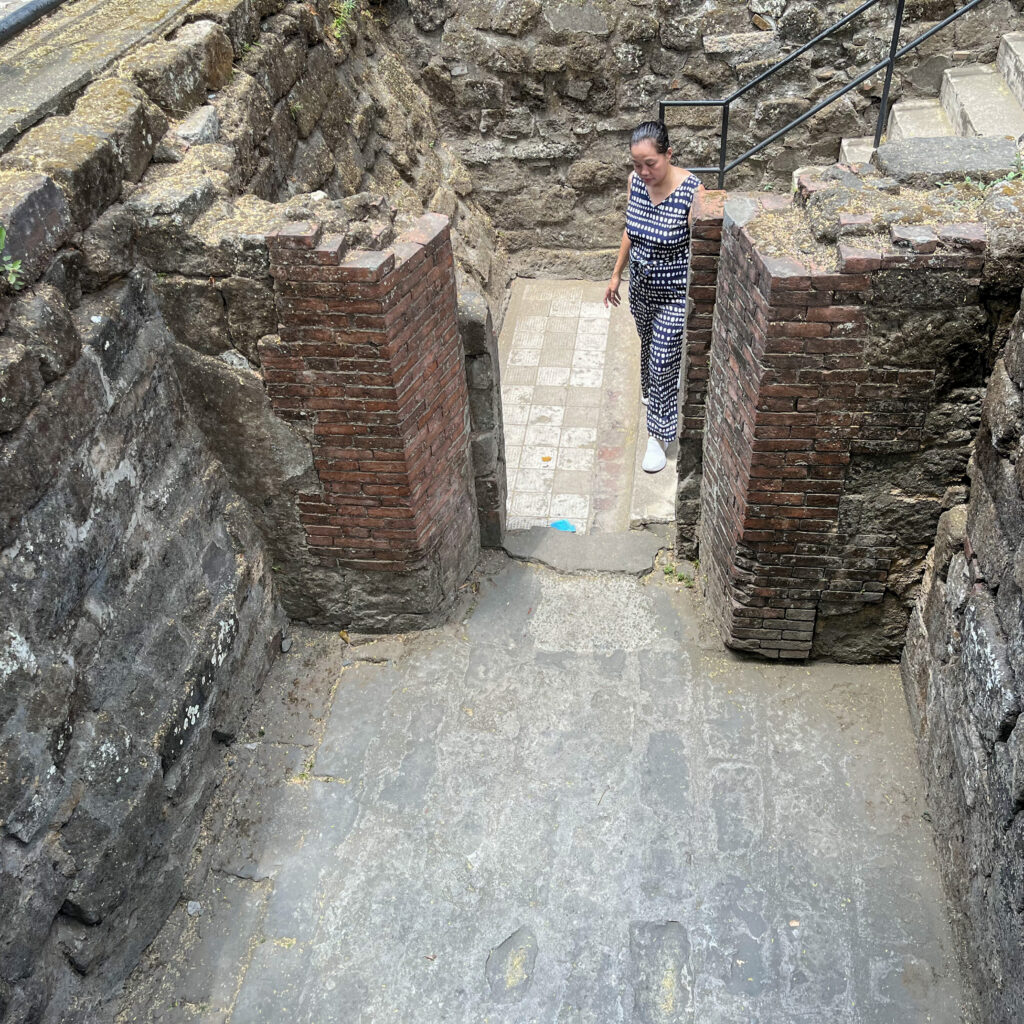
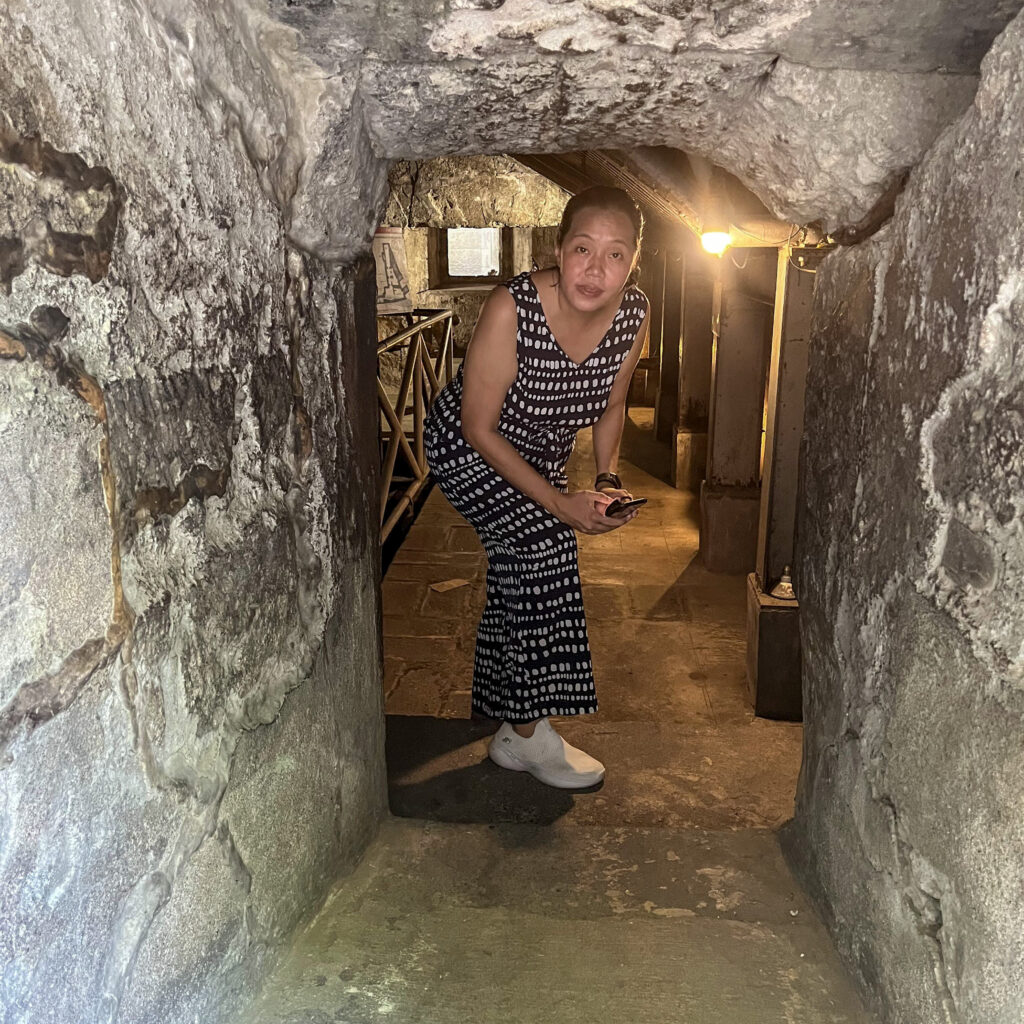
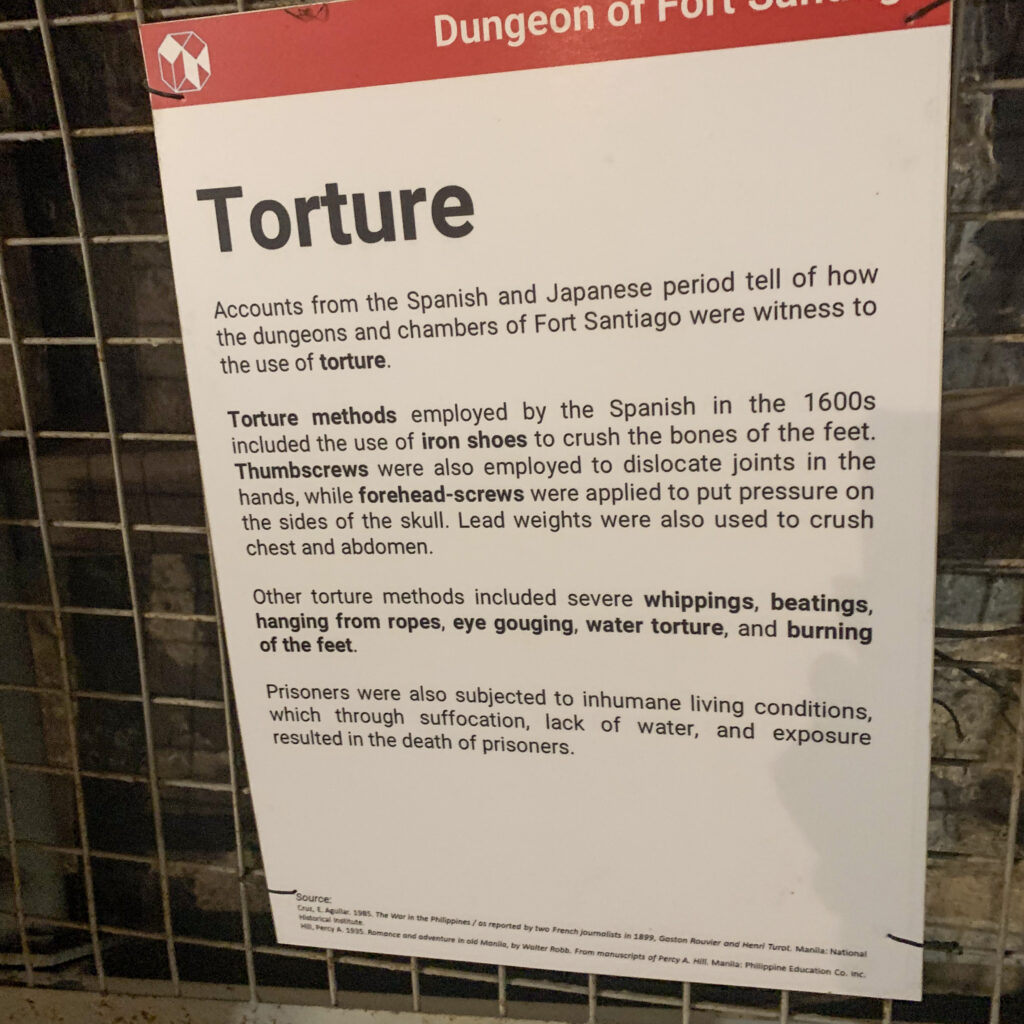
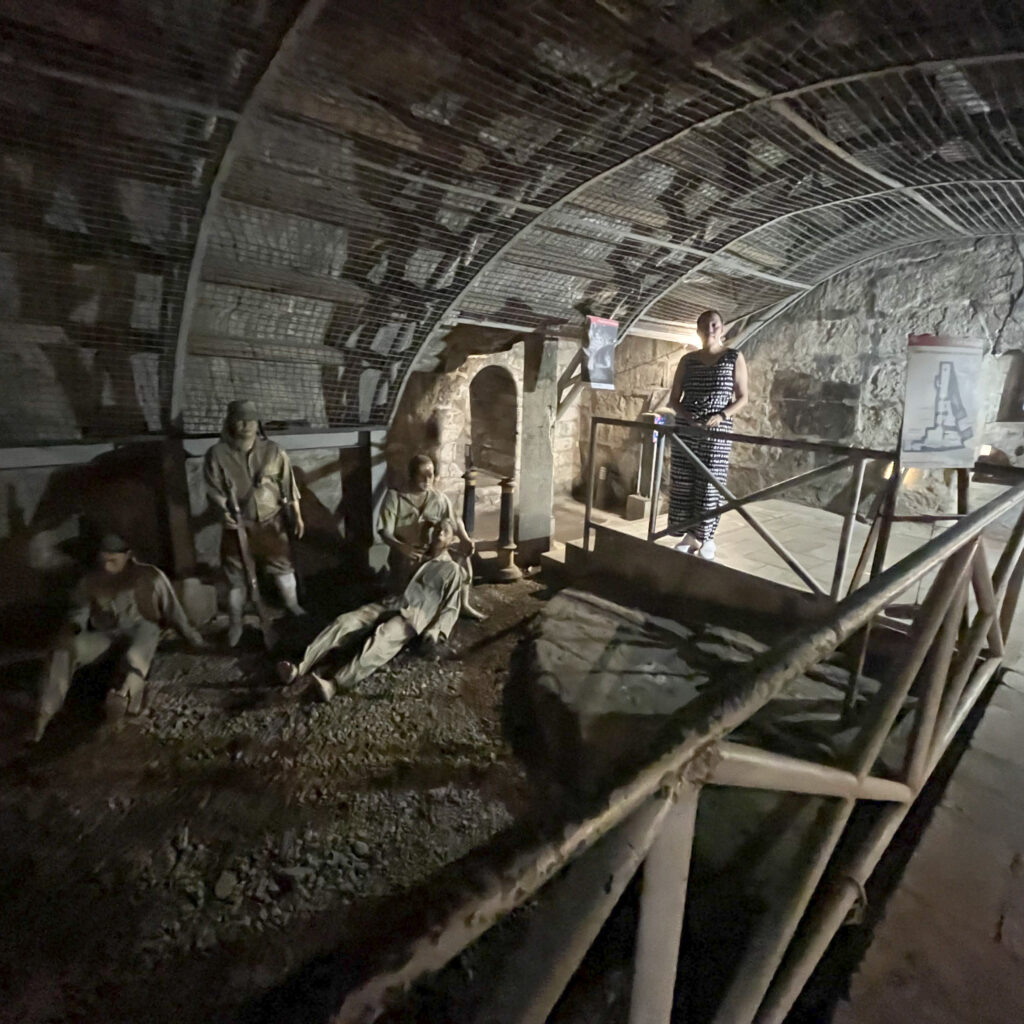
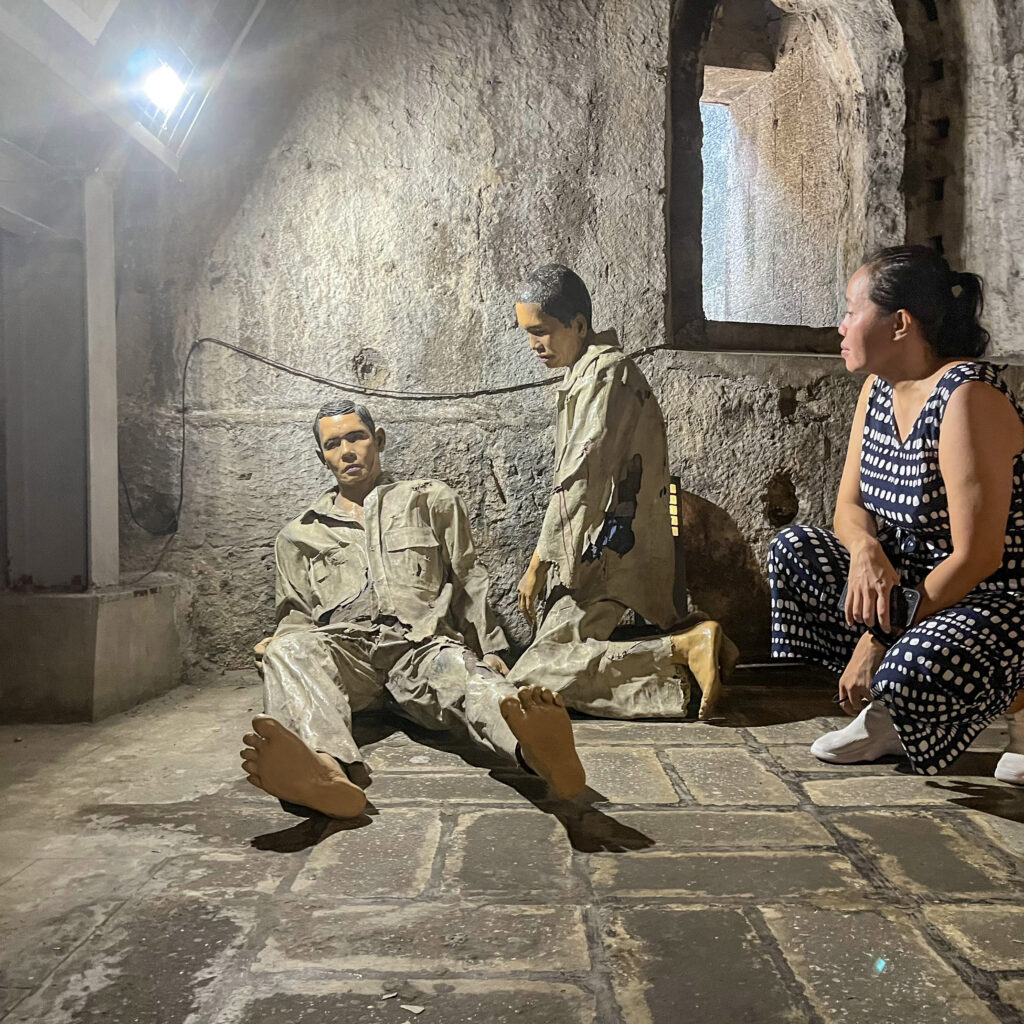
The Dungeons. At last, the long-awaited dungeons. No visit to Fort Santiago would be complete without venturing into the depths of its infamous dungeons. Going down, you will have to go inside using a very small door. Carefuul if you’re claustrophobic. Then you will descend into the dimly lit chambers, where the walls are full of photos of the sufferrings of the Japanese war 1. These subterranean cells once housed countless prisoners, including the Philippines’ national hero, José Rizal, who spent his final days here before his execution in 1896. As you navigate the narrow corridors, you can almost feel the weight of history pressing upon you. Imagine the anguish of those who endured unimaginable hardships within these confines, their spirits forever etched into the stone walls 9. I was reading the Spanish torture panel and I wanted to cry just from the description alone.

The Rajah Soliman Theater. The Rajah Soliman Theater holds a unique place within Fort Santiago’s walls. Originally built as living quarters for the fort’s soldiers, it met a harsh fate during the Battle of Manila in 1945, leaving it in ruins. The ruins were transformed into an open-air theater, a haven for the Philippine Educational Theater Association (PETA). This stage became PETA’s home for decades, a platform for their thought-provoking plays until they moved to a new venue in 2005. I once saw a play here when I was in college. It was at night and the effect was just awesome. I never forgot the experience.
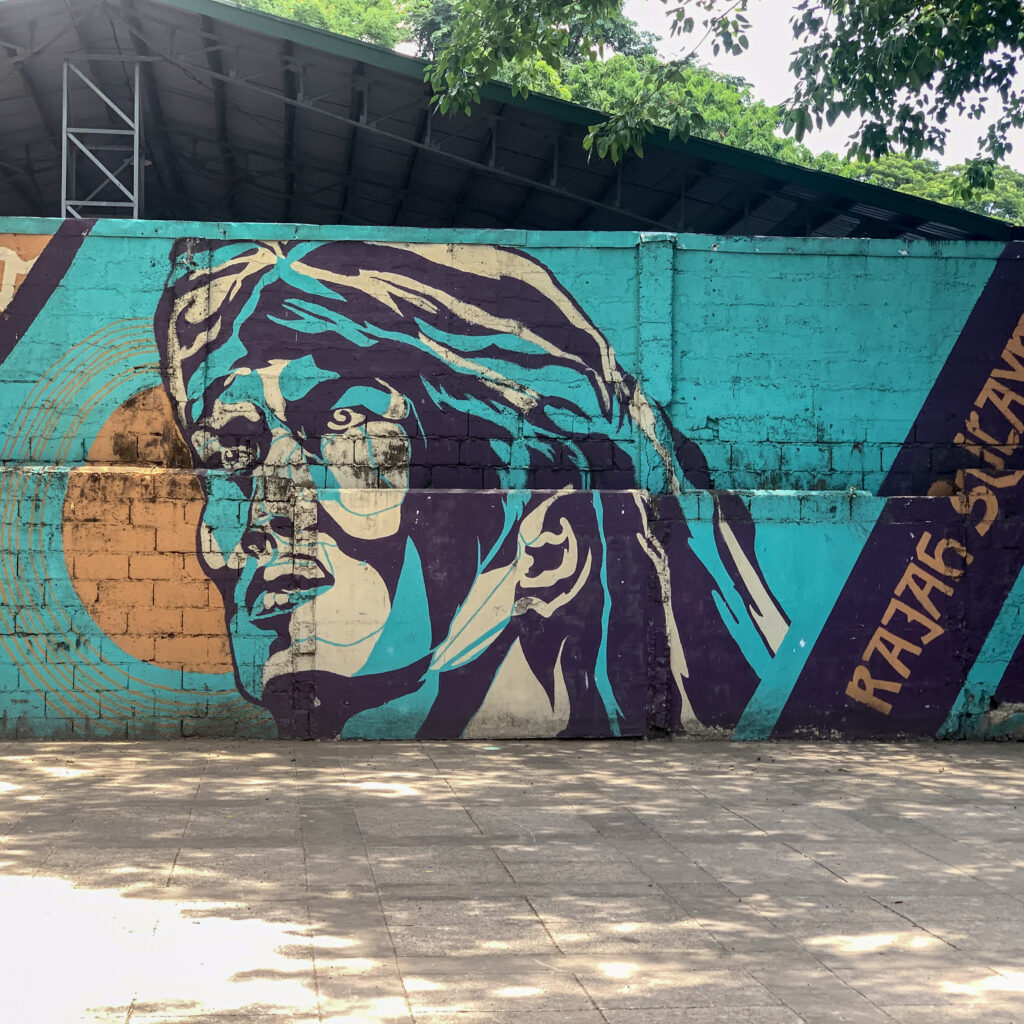
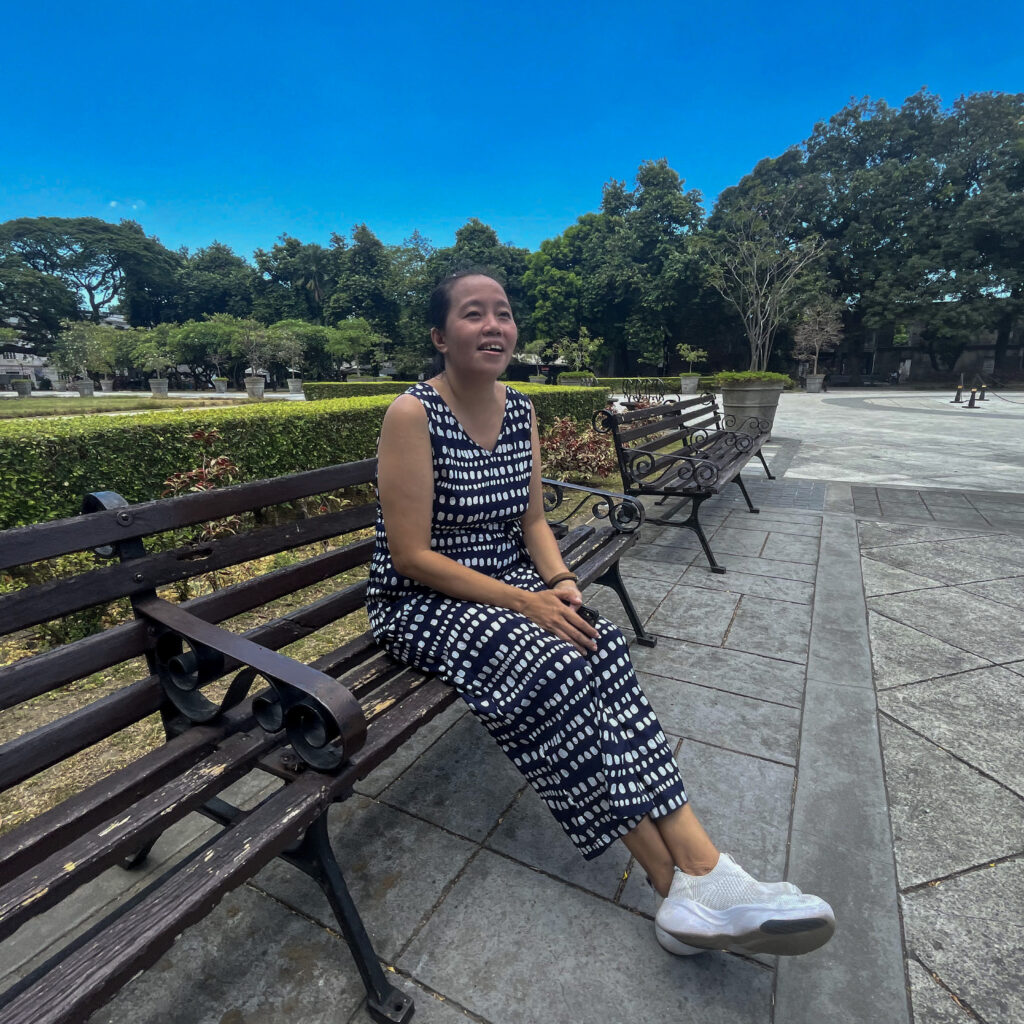
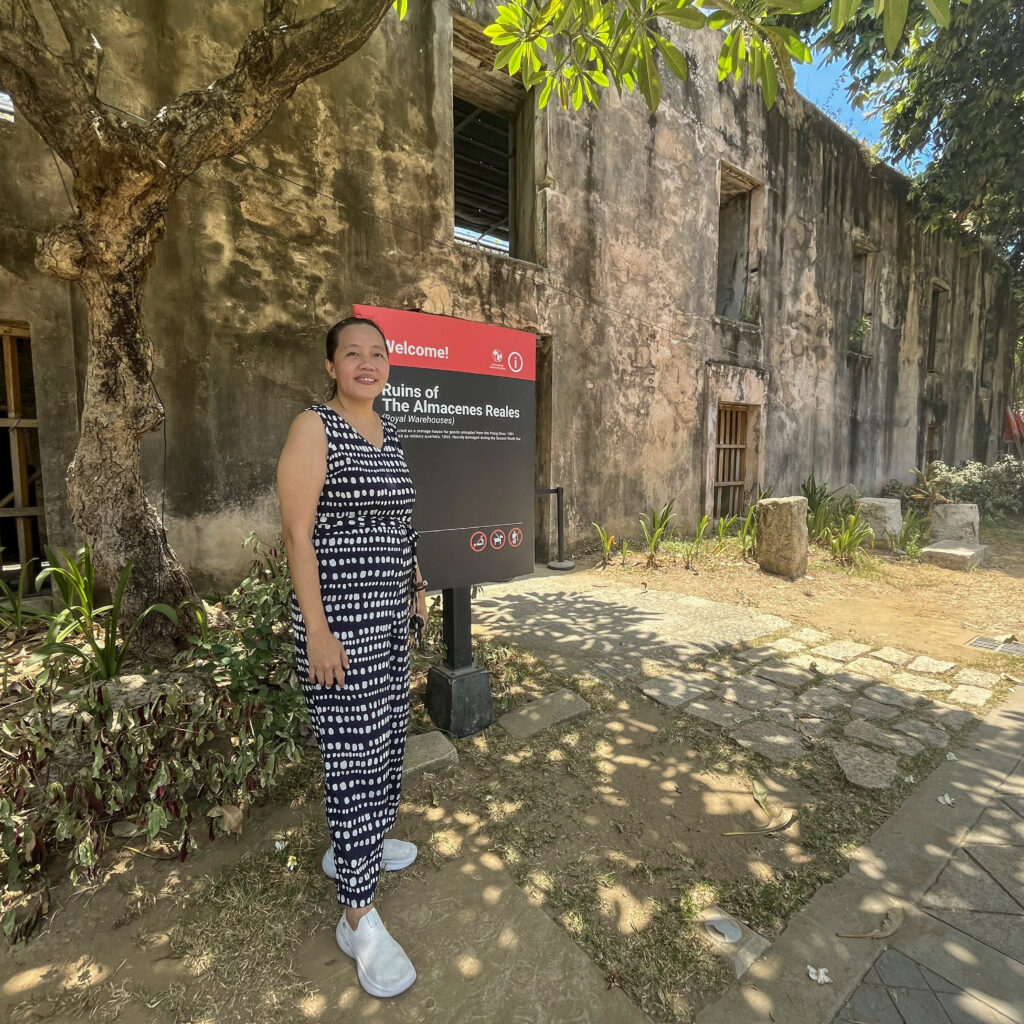
The Almacenes Reales. And last we have the ruins of Almacenes Reales. Across the Plaza Moriones stand the skeletal remains of the Almacenes Reales, the Royal Warehouses. Built in the 16th century, these walls once bustled with activity. Goods arriving by ship at the nearby river gate found a temporary home here, alongside vital supplies for the fort and other government offices. Unfortunately, the 20th century saw a change in priorities. American military engineers prioritized easy access to the river wharves, and in doing so, leveled a portion of the Almacenes Reales’ once-proud wall.
A Journey Through Time
Leaving Fort Santiago, you can’t help but feel a regain your respect for the Philippines’ crazy-long history and the grit and passion of its people. Youd think that this epic landmark is just some dusty old fort but it’s truly a living reminder of the country’s unbreakable spirit. Every stone whispers stories of the past, inviting you to imagine the struggles and victories that shaped the Philippines into what it is today.
Whether you’re a history geek, an architecture nut, or just curious about the mysteries of the past, Fort Santiago is like a choose-your-own-adventure tour that’ll leave a lasting impression. Walk the same ground as those who came before you, and let the stories in these walls inspire you to write your own chapter in this amazing country’s future. I promise your Saturday excursion will be a historic blast that leaves both you and the little ones feeling empowered and bonded.
Be sure to sign up for my RelaxLangMom newsletter to learn about more quirky outings planned this season. You’ll get exclusive sneak peeks, deals, and first access to future adventures. We already did a DIY Tour for Intramuros in general here: DIY Tour of Fort Santiago in Intramuros – Fun educational activity for kids and parents
